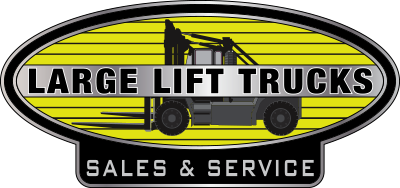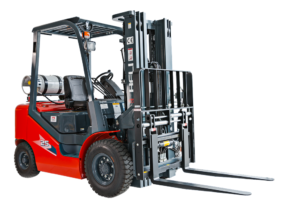Forklift Parts 101: A Beginner’s Guide to the Common Forklift Parts and What They Actually Do
A forklift, also called a powered industrial truck, is an important piece of equipment to move and lift loads across industrial settings and warehouses. Knowing the forklift’s parts and their operation is important for safe and effective operation.
Some of the key components of a forklift are forks, mast, counterweight, carriage, power supply, cab, and other controls. In this blog, let’s discuss the key forklift parts their functions, and how to properly operate a forklift.
Key forklift parts and their functions
Below are some of the key forklift parts and their functions:
- Mast: The mast is a vertical component of a forklift that helps forks to lift and lower the load.
- Forks: They are flat and long prongs attached to the carriage that helps to lift and carry loads.
- Carriage: It is a structure that holds forks and can lift and carry loads.
- Counterweight: It is a heavyweight at the end of the forklift that balances the load and avoids tipping.
- Cab: It is an operator’s cabin that has pads, a steering wheel, and controls.
- Fuel type: Forklifts use diesel, gas, propane, or battery-operated.
- Hydraulic lift cylinder: It manages the vertical lift of the mast and forks.
- Overhead Guard: It is a protective frame that safeguards the operator from debris and dust.
- Load Backrest: Stops the load from tipping towards the operator.
- Controls: Pedals and levers are used to operate and drive the forklift.
- Steering Axle: Helps to steer the forklift.
- Drive Axle: Helps to transfer power from the engine to the wheels.
- Wheels and Tires: Helps the forklift to support its weight and move around.
How to properly operate a forklift?
In order to keep a forklift operational, perform daily inspections, safe and proper operation, regular maintenance, and repairs. Performing regular inspections will help to detect potential issues and help the forklift to function effectively. Following safety procedures and manufacturer’s guidelines to avoid accidents and damage.
Below are the steps to be followed for proper operation of a forklift:
Perform daily inspection:
- During each shift, the operator should conduct a quick inspection to check tire pressure, any fuel leaks, the operation of controls, and any obvious damages.
- If you note any problem, record and report to the supervisor for proactive actions.
- Forklifts that are found to be defective should not be operated.
Proper maintenance
- Perform proper cleaning when they’re operated in dusty or dirty environments to avoid component damage.
- For a battery-operated forklift, always follow the battery schedule, for example, the charging should be done after an 8-hour shift or when the battery level is below 30% to extend battery life.
- Check and refill the fuels like oil, coolant, and hydraulic fluid at regular intervals.
- Replace the air filters when required to maintain consistent engine performance.
- Always check the tire pressure for any damages or cuts.
- Check for leaks in mast chains and hydraulic hoses.
- Make sure the operator compartment is free from clutter and clean.
Operation Handling
- Always balance loads and secure them to avoid overloading the forklift.
- Make sure you operate the forklift at a safe speed in pedestrian traffic and also maintain control at all times.
- Make sure you wear a seatbelt when you operate the forklift.
- Make sure you have clear visibility when you turn or reverse the forklift.
- Ensure you follow safe driving practices when driving with the load, on uneven surfaces, and in grade.
On-time Repairs
- Whenever you find an issue or problem, it should be addressed promptly to avoid further damage.
- If required, contact a professional forklift service provider for proper maintenance and repairs.
To operate a forklift, you need to start with a pre-operational inspection to ensure the forklift is in proper working condition, perform safe loading and unloading, and maintain a low center to ensure proper load and low center gravity. Whenever you operate the forklift, make sure you drive slowly, avoid sudden stops or sharp turns, be aware of your surroundings, wear safety gear, and follow all safety guidelines.
Points to ponder
- Whenever you park the forklift, first select the designated parking area, lower the forks, and set the parking brake.
- Avoid wearing loose clothing that may get caught in the forklift’s mechanism or components.
To learn more about forklift parts and their operations, talk to our technicians today.
If you are looking to buy a new or used forklift for your workplace, you’re in the right place. Large lift trucks offer a range of forklifts from all leading brands that meet your specific purpose. We also provide forklifts for short-term or long-term rentals in Houston, Texas. Talk to our expert today and select the right forklift for your industry.
FAQs about Forklift Parts
What is a forklift?
A forklift, also called a powered industrial truck, is an important piece of equipment to move and lift loads across industrial settings and warehouses.
What are key forklift parts?
Some of the key forklift parts are mast, forks, carriage, counterweight, cab, fuel type, hydraulic lift cylinder, overhead guard, load backrest, controls, steering axle, drive axle, and wheels and tires.




